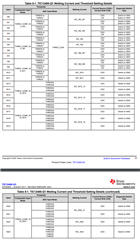Need technical expert recommendation from about TIC12400 for following queries.
- Can we read the analog voltage of all input through SPI?
- If yes, then can you provide the mode recommendation if I want to read the multiple analog input?
- Can we use partial channels as sensor analog interface and some channels are switch input?


